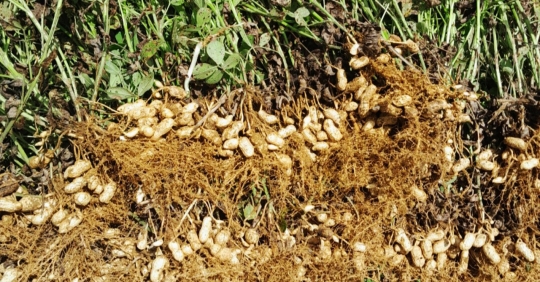In the spring-summer season of 2023, red peanuts have a good season, especially the price of peanuts has increased (fresh peanuts are bought from traders at the price of 16,000-17,000 VND/kg), according to the people of Ta Gia highland municipality is extremely excited.
Ta Gia flavor with red peanuts
Ta Gia is a township in Region I of Than Uyen (Lai Chau) District, 25 km southeast of the district center, with a total natural area of more than 8,800 ha, including 984 households, more than 5,600 people, including 03 Thai groups, Mong and Kho Mu live in 12 villages (03 of which are particularly difficult).

Ta Gia is a community on the Nam Mu River.
In the past, the Ta Gia made a living mainly from growing wet rice in the fields along the banks of the Nam Mu River and streams in the area. Their livelihood depends on subsistence farming and animal husbandry. The main crops grown in the upland areas are maize, cassava and upland rice.
Since 2015, when the Huoi Quang Hydroelectric Power Plant blocked the river, the waters of the Nam Mu River rose to become a lake and the area of wet rice fields on both sides of the river was flooded quite badly. In the lakeside villages, people have changed their way of life and switched to freshwater aquaculture in hydroelectric reservoirs. However, most people still grow food crops to feed themselves and raise livestock and poultry.
In recent years, people have been very active in learning techniques and putting into production many new varieties of plants with high economic value, such as cinnamon, tea, etc. However, the red peanut is the native variety of the village. Gia (Ta Gia community) is still one of the short-term crops that are a good source of income. In peanut production, farmers now have access to many technological advances and fertilizers for high yields and quality.
If you come to Ta Gia this June, you will see the whole green Ta Gia on the winding roads along the mountainside, along the blue Nam Mu River and on the slopes of Mi Village. The green color of the rice in the foothills of Mi Village, the green of the terraced fields of a rice crop in the valley at the foot of Mount Hua Mi, the green color of the water of Nam Mu transformed into a hydroelectric lake.
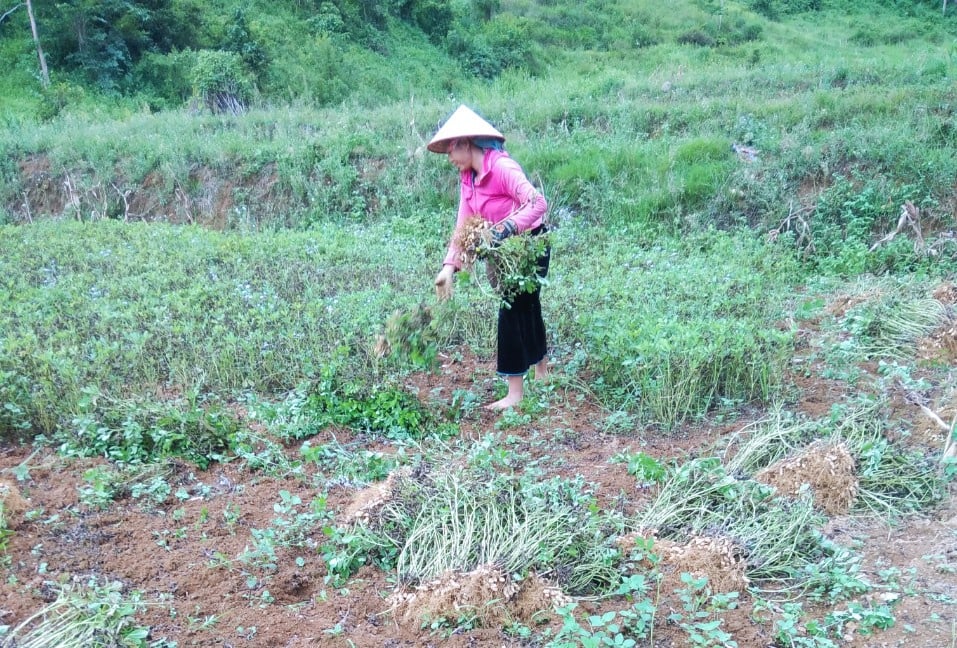
People in Ta Gia municipality harvest spring and summer peanuts in the joy of a good harvest.
Peanut harvest season is here. In the spring-summer harvest, the tubers have germinated, but the leaves and stems are still tall and strong. When peanuts were planted in the garden, in the fields for three months, a few roots were uprooted to check, seeing that the peanuts were already stretched out, it was time for people to prepare to uproot the peanuts and to take home. Lac was sown in March as Than Uyen prepared to welcome the first rains of the season, just over three months. Now many villages of Ta Gia are starting to harvest the red peanuts, the highest yield is in Gia village.
Ta Gia red peanuts have the characteristics of thin shell, large seed, full expansion on the shell and fragrant, which is why it is loved by many people. Although there are many areas in Than Uyen where peanuts are also grown, consumers are still looking for Ta Gia red peanuts.
So far, Ta Gia farmers have used traditional local red peanut varieties, with an average yield of around 18 quintals/ha. In the spring-summer harvest, people plant peanuts in the garden, in the fields, and even in the fields of a single crop. On cultivated peanut fields, the yield can be up to 20 quintals/ha.
Sky-High Prices, New Opportunities for Red Peanuts
As the spring-summer harvest begins in 2023, people in Ta Gia villages are ready to prepare seeds, fertilizers and soil for the new harvest. Municipal officials and village officials actively mobilized people to plant peanuts on the entire flooded area, in the gardens and in cover crops in the tea fields At the first harvest, the entire community has a total area of more than 28 hectares of peanuts, the total production of red peanuts in the whole Municipality is nearly 51 tons.
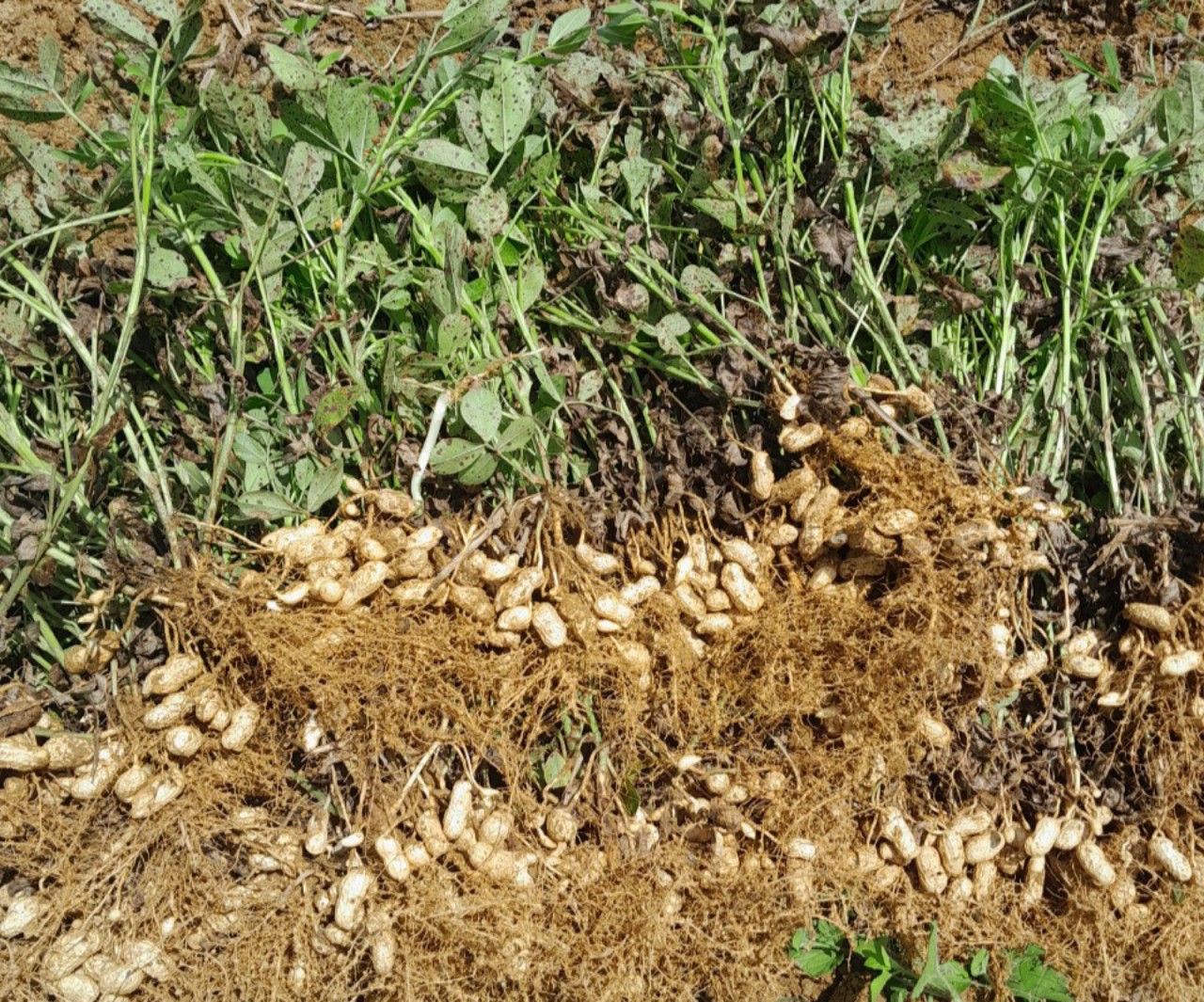
Ta Gia red peanut has large roots, seeds, high yield and very delicious quality, so the price is very high.
In this year’s spring-summer harvest, the red peanuts are growing and developing very well. By mid-June, the farmers had harvested about 2/3 of the area under cultivation, the average yield was 18 quintals/ha, about 1 quintal/ha more than every year.
In particular, there are households such as Deo Van Cong, Vi Van Chai, Vi Van Cu, Lo Van Man… that grow on an area of 2,000 to 3,000 m², the average yield is 25 to 30 quintals/ha. Due to the high price of peanuts in the market this year, traders buy fresh peanuts for the people at the top of Ban Gia Bridge for about 16,000-17,000 VND/kg, helping them make a good profit and considerable income to achieve. Those who bring fresh peanuts to the district market (22 km away) can sell them for VND 20,000/kg.
Mr. Lo Van Man, secretary of the Gia village cell, led us to some well-producing households in Gia village and happily introduced us: “In the spring-summer harvest, the whole village cultivates 8 ha of peanuts, the average yield is 2 quintals/Sao.” . (1,000 square meter mast). For this summer-autumn harvest, the village is preparing for the planned sowing of 8 hectares, the area is expected to expand another 5 hectares.
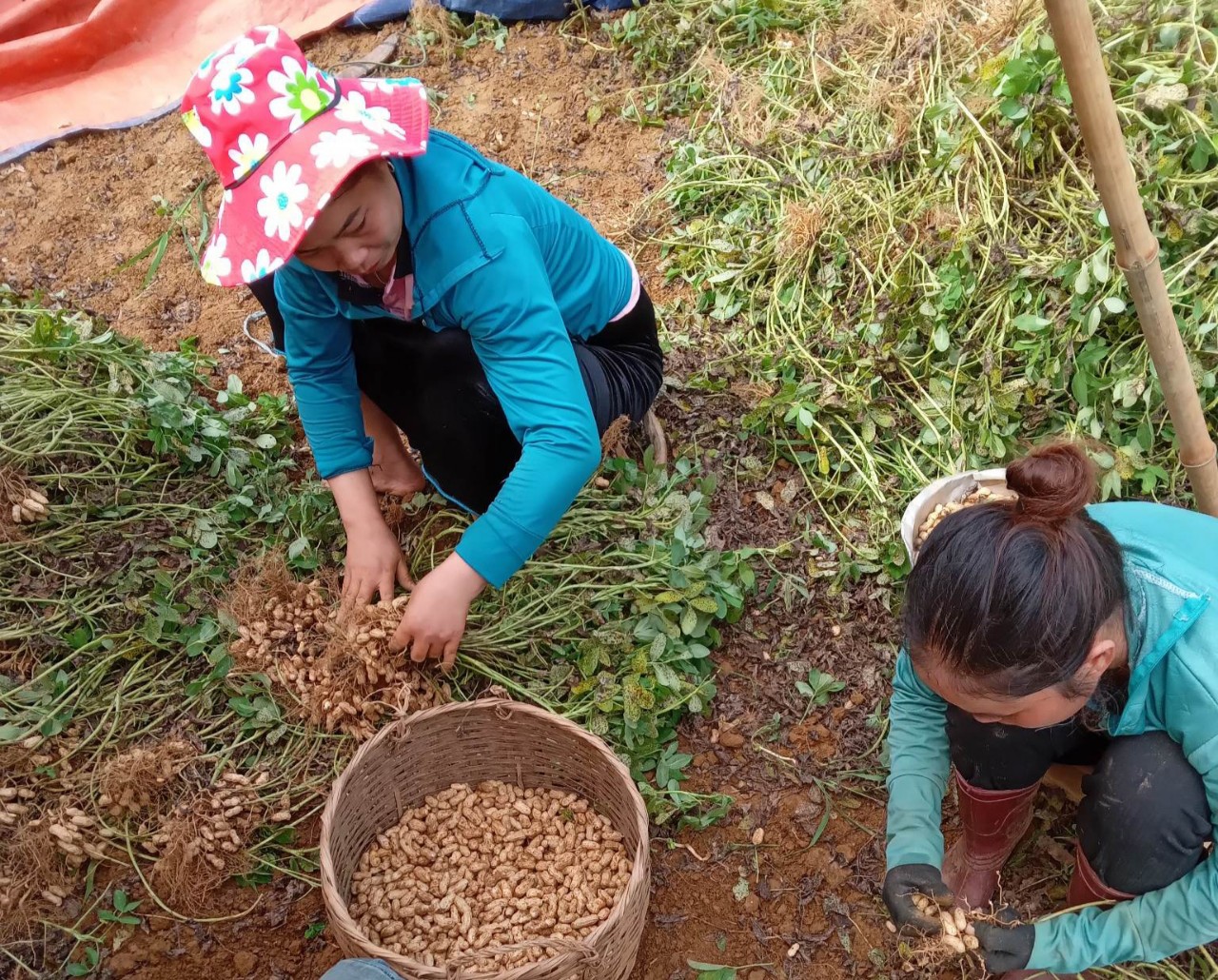
The native red peanut tree gives good yields, which is why she is actively expanding the area.
The household that produced the most red peanuts in the last harvest was Mr. Deo Van Cong in Gia Village, who planted 3,000 m², harvested more than 9.6 quintals and sold VND15.3 million. He affirmed that “the income from red peanuts is two to three times that of rice without hard labor, just planted once, weeded once and harvested once.” In addition to Mr. Cong’s household, Mr. Vi Van Chai’s household planted 2,000 m² of red peanuts and harvested 6 quintals of fresh peanuts, achieving an average yield of 3 quintals/Sao.
Mr. Lo Van Dung, head of Gia Village, said: Ban Gia has 118 households, the current average income is more than 40.5 million per person per year. With today’s demand for red peanuts in the market, the belief that people are actively growing red peanuts will help increase household income.
Mr. Lo Van Chai, chairman of the Ta Gia Commune People’s Committee, said that before the peanut harvest in the spring-summer harvest of 2023, the Commune People’s Committee instructed the villages at the briefings to actively cultivate seeds from Harvest 1 to use them for to prepare the sowing The autumn harvest. Winter (Season 2) was completed before August 15, ensuring that the target will be exceeded in 2023 (district set target of 48ha/2 crops).
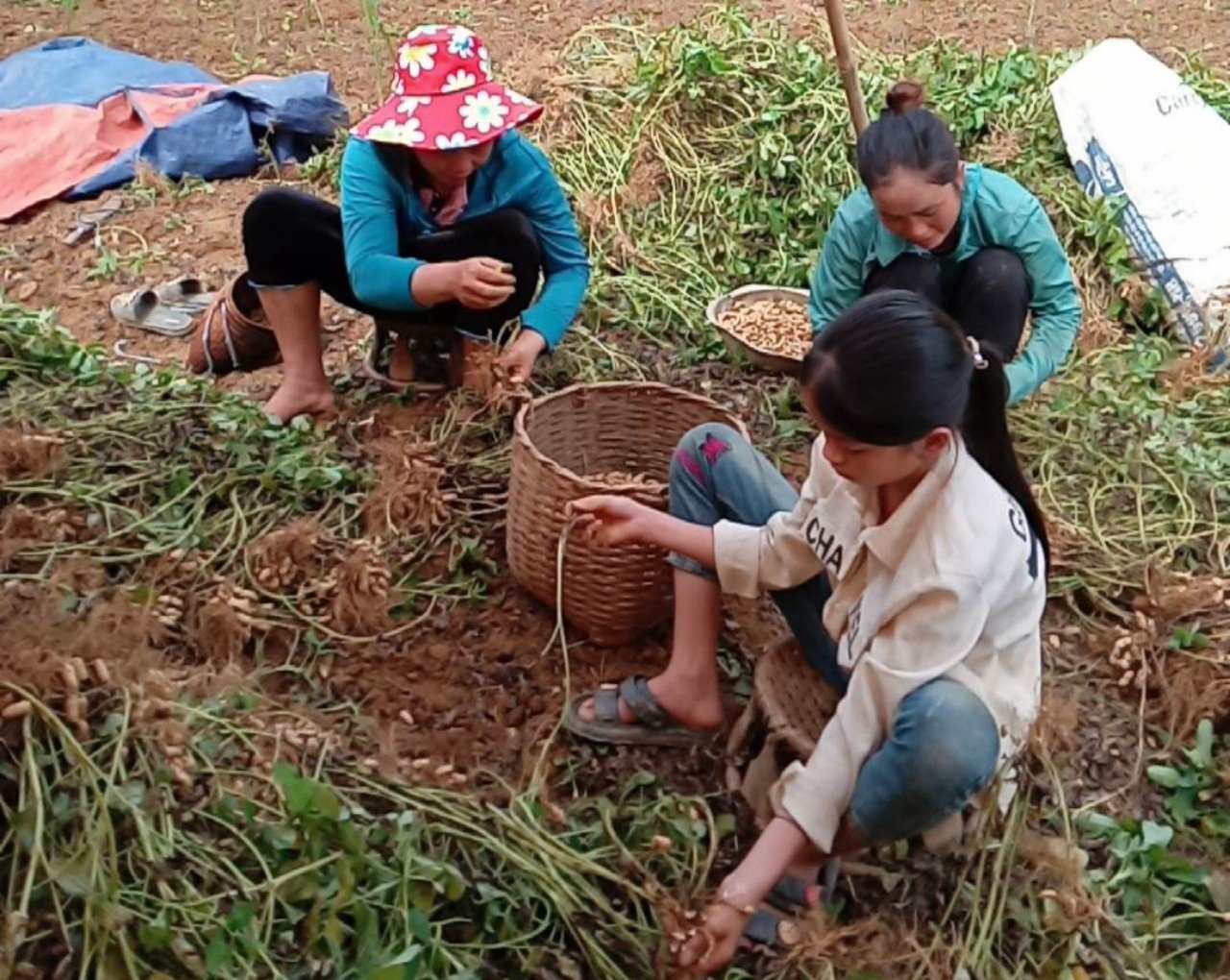
In addition to a high income, planting peanuts also contributes very well to soil improvement.
People in Ta Gia have gradually realized the value of red peanuts (it doesn’t require as much effort as wet rice), but the resale price is double that of rice. Some households in Gia village also confirmed that from 2024 the field will only produce enough food, the rest of the area will focus on growing peanuts. The commune will take Gia village as a starting point for converting the cultivation area from rice to peanut cultivation and then expand further in other villages.
With an average yield of 18 quintals/ha, red peanuts are developing into an agricultural product that brings a high income to Ta Gia farmers. The use of traditional red peanut varieties with stable yields and high quality, which are popular with consumers, has helped increase grain production and provide income for local farmers. .
In addition to the seeds, the leaves and stalks of harvested red peanuts are used by farmers as cover manure to add organic nutrients to the soil…thus helping agricultural crops develop conditions.

